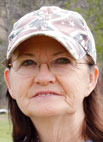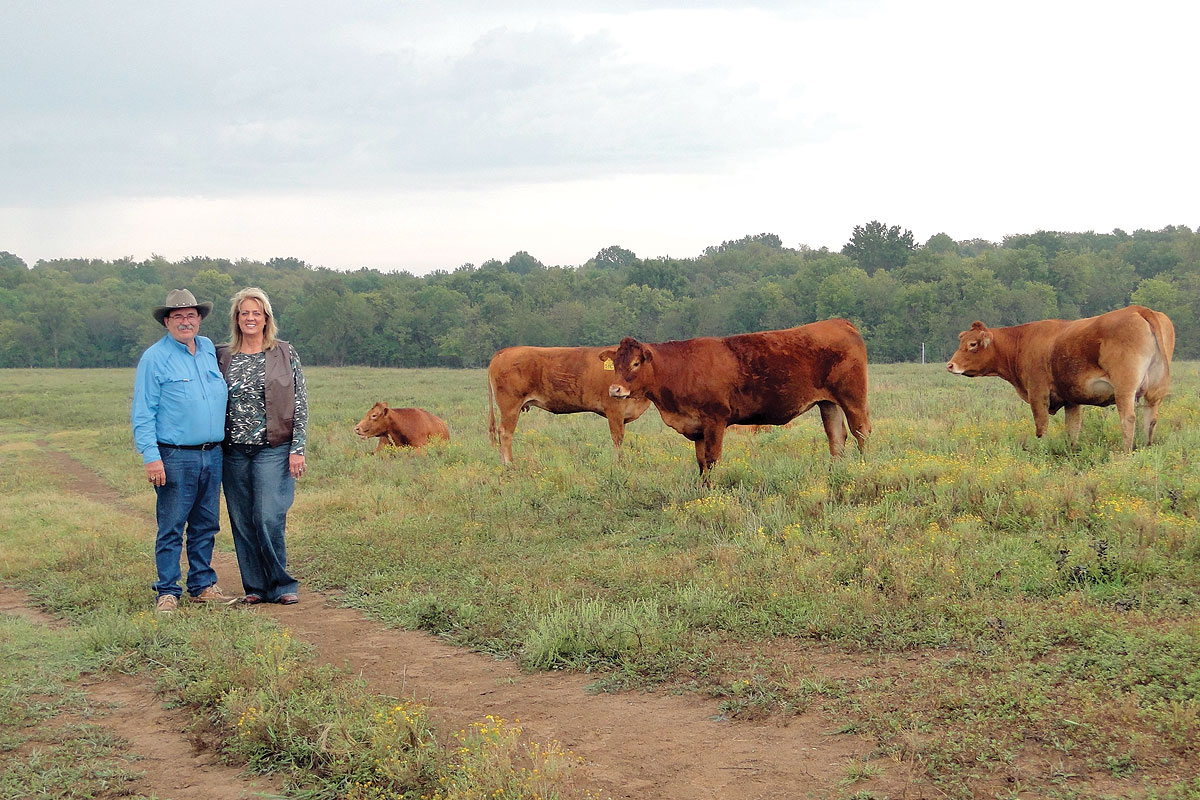Nestled in the rolling hills of Greenwood, Ark., is the home of Charolais breeders Jim and Reba Bray. The hard work ethic and family morals Mr. Bray learned growing up on a post-depression farmstead have proved to be a blessing to his family. He speaks of the good ole days with fondness. "The dollar went a lot further then, if you could get a dollar. You went to the store once a month, bought your flour and sugar. That was it. Always had a garden, hens and stock." But growth in the Fort Smith/Van Buren, Ark., area has brought many changes to local lifestyles, and the Bray family is making the adjustment. After the Highway 71 bypass changed traffic patterns, and their home burned four years ago, the Brays built a new home farther from the road on a rise that overlooks the creek and their cattle pastures.
Jim said, "I had cattle once before. My son wanted to get back to it. I retired in June 2006, so I've been running the farm." On top of caring for his wife, who has become housebound due to complications with fibromyalgia, maintaining pastures and feeding cattle has become Jim's new occupation.
Word of mouth helps Jim's bull sales. He keeps one old Angus cow, which really stands out in a field of Charolais cattle. Jim said, "Everybody wants a Charolais bull, but they are scared of them. They see that old black cow with her Charolais calf and decide it's okay."
Buyers are attracted to Bray Charolais because the bulls are semen tested and veterinary checked before being released to the new owner. Well-fed cattle is an important concept for this registered seedstock producer.
"Well, we try to keep them up nice. People aren't going to buy skinny bulls. These bulls get 10 to 12 lbs. of feed a day, and have hay out all the time. They have to have the fiber. My bulls don't fall off (lose weight) during breeding season. Once people see them, they buy them."
With rising feed costs looming, Jim recently installed two used chicken house feed bins and has started buying bulk feed. He buys his hay from a dealer in Charleston, Ark.
Heavy culling at weaning time means these expensive inputs only go to the best cattle. Using an electronic chute scale, he monitors weights and culls aggressively. "If they don't act good, they're light weight or puny when they are weaned we just haul them to the auction barn." He continued, "Right now, we've been selling about all the bulls we can raise."
The cows calve in winter as well as spring, so feed is important to keep lactating cows in good condition in cold weather. A low birth weight EPD bull means he doesn't have to spend a lot of time baby-sitting his first-calf heifers. Work saving devices and corral arrangement give Jim more time to devote to his family.
Current retirement plans include building the 40-cow herd by retaining heifers, and next year purchasing hay equipment to harvest some absentee owner land in Oklahoma. "We just hauled in 200 tons of litter. We have to keep it fertilized up on these hills. January is a good time of year to do that, it gets soaked into the ground by spring when the grass is coming up."
The heart of Jim's operation is providing sound, fertile bulls to buyers while building a family business, and enabling him to continue his care of Reba. Reba was sure to give credit where it is due, saying, "The Lord always provides what we need."






